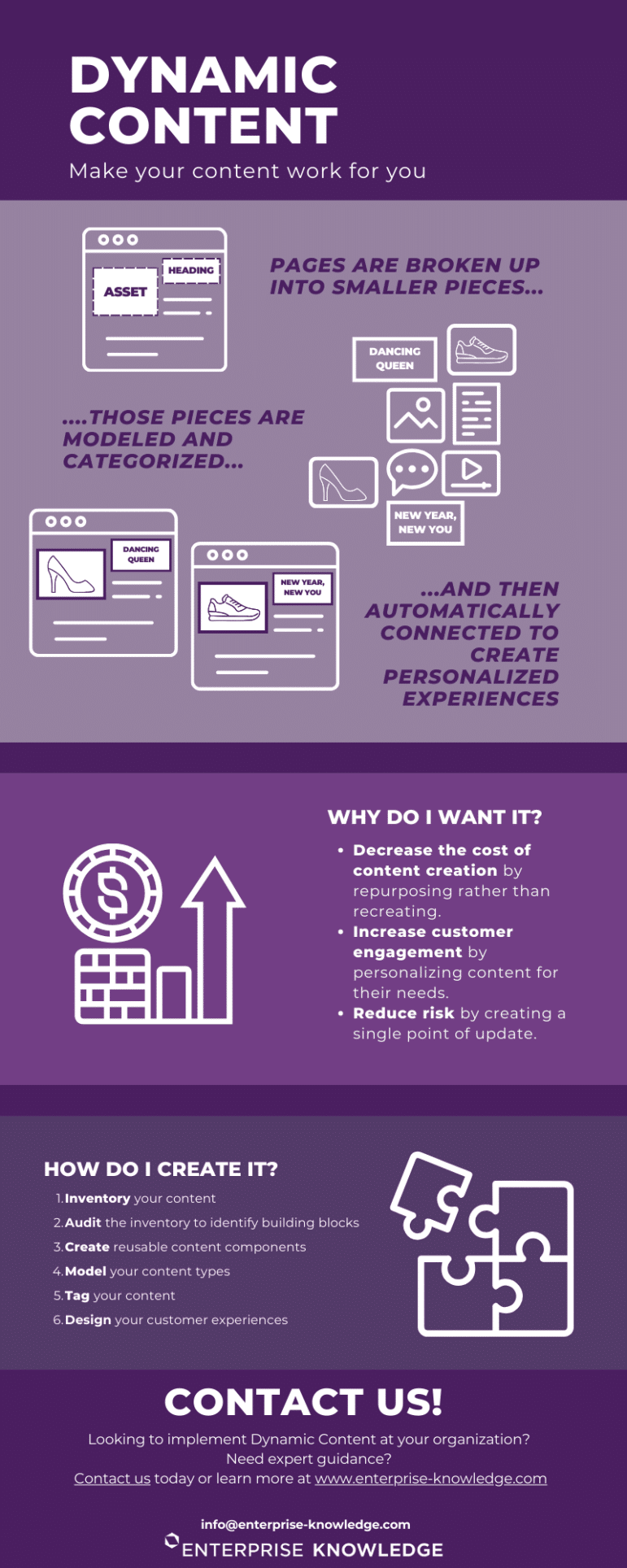Every day, people are inundated with information at a rapid and ever-increasing pace. This creates pressure to make sure that your audience is getting the content they need when and how they need it. Creating high-quality content quickly and efficiently requires thinking of your content not as a web page or PDF but as a set of flexible, reusable building blocks that can be assembled into the format that meets your employees’ or customers’ needs. These blocks are sometimes referred to as intelligent content, modular content, atomic content, or component content. A dynamic content model leverages those reusable components to build personalized experiences. Read on for a crash course on Dynamic Content.
Interested in turning your content into a strategic business asset? Contact us today!

